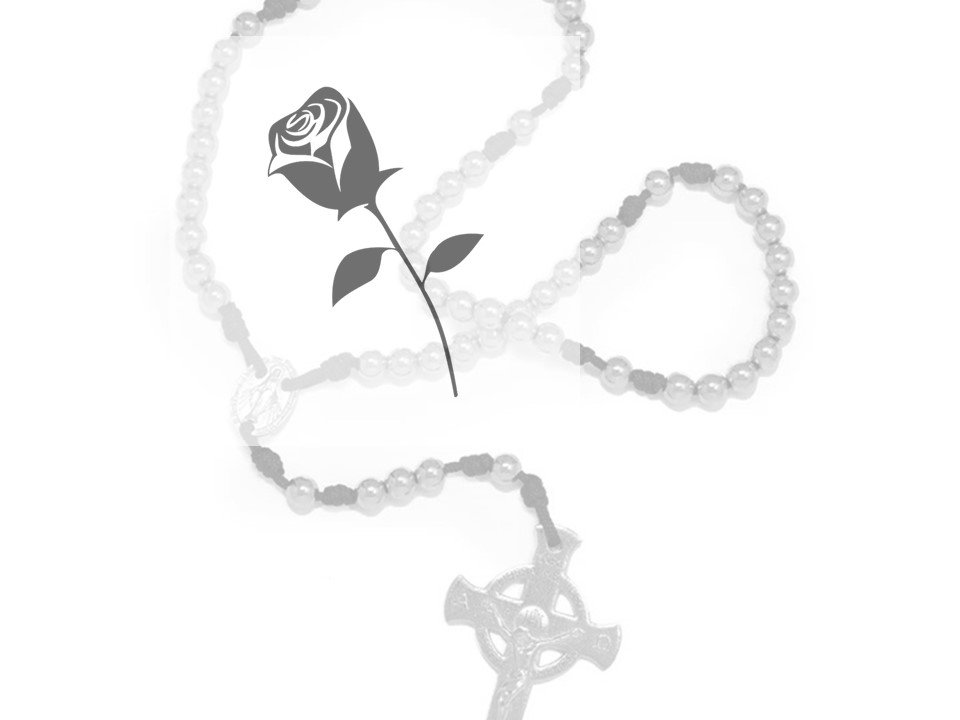The Little Irish Rose by Tom Keating
I saw my first dead person when I was seventeen, during the frigid winter of 1966. A priest in the seminary where I was studying asked me to assist him with a home wake service.
We arrived at the home and went to the kitchen to put on our robes and surplices. The priest said, “We will do the rite in Latin. Folks feel it’s more real than English.”
Carrying the processional candle, I entered the dining room. The dead person was there, lying in an open casket on the dining room table. I shuddered and my candle flickered. Even though I didn’t want to look at the body, my eyes locked on the dead man, his face a mask of waxy makeup and garish red cheeks. It was creepy yet fascinating. I knew when I became ordained, I would see a lot of death and dying, but this wake was my first.
My eyes searched the room for something else to look at, and then I saw her - a tiny woman dressed in black, her black felt hat covering her white hair. She was saying the rosary at record speed. The beads flew through her fingers, stopping only briefly at the larger Mysteries of Faith beads before rushing through the next ten Hail Mary’s.
The priest began the ceremony “In nomine Patris, et Filii, et Spiritus Sancti.”
I replied “Amen.” Everyone made the sign of the cross. The tiny lady in black paid no attention.
After the priest finished, he bent over the woman and said something. She did not acknowledge him, just kept saying her speedy rosary.
We finished the prayers, changed, and left. As we drove back to the seminary, I asked the priest about the tiny lady in black.
“That’s Mrs. Mallon. She comes to all the Irish funerals and wakes. People call her a saint, ‘the little Irish Rose.’ Sitting there at a wake, she takes on a family’s grief and sadness doing her Rosary. A chair is always set for her.”
I went on a few more home wakes with the priest, and when Spring arrived, once again he asked me to assist on a ceremony.
“Tim,” he said quietly, “it's Mrs. Mallon”
Oh my god! I thought. The little Irish Rose!
We drove to South Boston and parked in front of the house. There was a long line of mourners outside waiting to pay their respects. The priest and I went in. I looked into the dining room. Her tiny, closed casket was on the table, black roses strewn around it and her rosary on top.
No one was sitting in a chair near the casket.
Artist’s Statement
I studied for the priesthood during the time changes occurred in the Catholic Church, It was in the sixties. Customs such as no meat on Fridays, the liturgy in English, and new modern translations of the Gospel really had a jarring effect on the Catholics in Boston. This story reflects the time when people held onto their customs, despite the changes happening around them.
Tom Keating has worked in a wide range of careers, from education, to broadcasting, software consulting and Internet design. His journal during the war in Vietnam, enabled him to publish his memoir, Yesterdays’ Soldier, A Passage from Prayer to the Vietnam war. He has also published in The Veteran, the Military Writers Society of America, The Vietnam Memorial 40th Anniversary Tribute, and 0-Dark-Thirty from the Veterans Writing Project, as well as numerous news articles. He lives west of Boston with his wife Kathleen.


